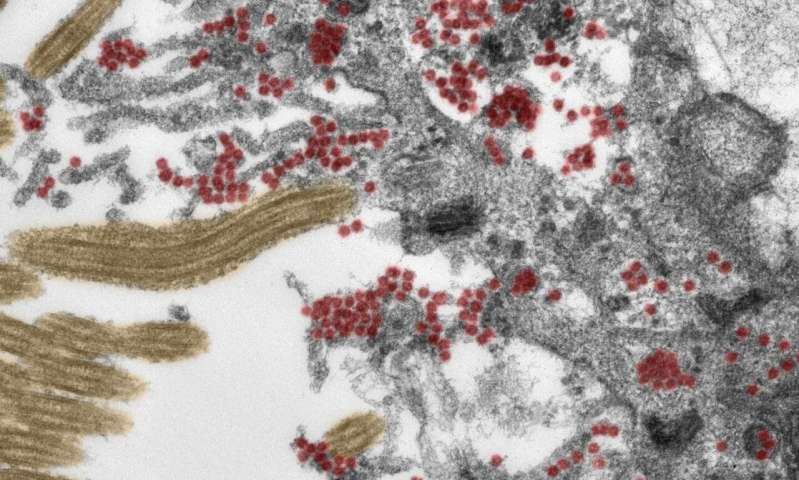COVID-19 virus can penetrate the brain through the nose
COVID-19 virus can penetrate the brain through the nose
- Should China be held legally responsible for the US’s $18 trillion COVID losses?
- CT Radiation Exposure Linked to Blood Cancer in Children and Adolescents
- Can people with high blood pressure eat peanuts?
- What is the difference between dopamine and dobutamine?
- What is the difference between Atorvastatin and Rosuvastatin?
- How long can the patient live after heart stent surgery?
COVID-19 virus can penetrate the brain through the nose.
According to a report on the Medicalxpress website, a recent study in Natural Neuroscience found that the new coronavirus can invade the brain through nerve cells in the olfactory mucosa of the nose, which may explain why the virus infection causes a series of complications such as loss of smell and taste and stroke.
According to Dr. Helena Radbruch of the Charit Neuropathology Department of the Berlin Medical University, COVID-19 is not just a respiratory disease.
In addition to attacking the lungs, patients will also experience a series of symptoms such as the cardiovascular system, gastrointestinal tract, and central nervous system.
The report shows that more than one-third of patients have neurological symptoms, including loss or change of smell and taste, headache, fatigue, dizziness, nausea, etc., and some patients have stroke or more serious complications.

Rabies virus and herpes simplex virus can invade the brain and damage specific nervous system cells. How does the new coronavirus do it?
Radbruch and experts in neuropathology, pathology, forensic medicine and virology performed autopsy on 33 deceased patients with COVID-19 pneumonia with an average age of 72 years, sampled samples from the olfactory mucosa and four different brain regions, and performed nucleic acid tests on tissue samples and cells, and For detection of the S spike protein antigen on the surface of the virus.
It was found that the virus was found in different neuroanatomical structures connecting the eyes, mouth, nose, and brainstem, with the olfactory mucosa having the highest viral load.
Using tissue staining, researchers tested the epithelial cells inside and near nerve cells to confirm the spread of the virus, that is, the olfactory mucosa is an important entry point for the new coronavirus to invade the brain.
Once the virus invades the olfactory mucosa, the virus can pass through the olfactory nerve all the way to the brain, causing a series of complications.
Radbruch added that the patients with COVID-19 pneumonia in this study are all severely ill patients, and the impact of COVID-19 pneumonia on them is fatal.
It is difficult to say whether this theory can be applied to patients with mild or moderate disease.
At the same time, we also found that the virus can not only pass through nerve cells, but also enter the brain through blood vessels, because evidence of the existence of the virus has also been found in the blood vessel walls of the brain.
The researchers also investigated the immune response of the brain and found evidence that the immune system in the brain and olfactory mucosa was activated by the virus.
They also found evidence of immune response in the cerebrospinal fluid. In some cases, researchers have also observed tissue damage caused by thrombosis in the brain, known as stroke.
Radbruch said that the new coronavirus was found in the cells of the olfactory mucosa, and the virus may invade the brain through this route, causing neurological symptoms such as loss of smell or taste. We have also found viruses in important areas such as the brain’s respiratory system.
They can affect respiratory function and worsen the respiratory symptoms caused by lung infection itself. We guess that this attack on the brain will also affect the function of the cardiovascular system.
(source:internet, reference only)
Disclaimer of medicaltrend.org
Important Note: The information provided is for informational purposes only and should not be considered as medical advice.



